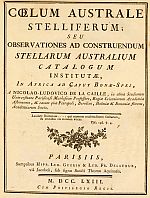
Star Lore Art
Coelum Australe Stelliferum
Nicolas-Louis de Lacaille, 1756 - 1763


 |
Star Lore ArtCoelum Australe StelliferumNicolas-Louis de Lacaille, 1756 - 1763 |

|


In 1750, French astronomer Nicolas-Louis de Lacaille set up a small observatory
at the southern tip of Africa, the Cape of Good Hope. Here, within four years, he observed 9,766 stars.
 De Lacaille returned to France in 1754 and presented a map, containing 14 new southern constellations to the French Royal Academy of Sciences.  An engraved planisphere (see right) was published by the Academy in 1756. It presented the new constellations with their original French names.  De Lacaille died in 1762 and the final, revised version of his star catalogue, with the new constellations being presented with Latin names was published in 1763. It was called Coelum Australe Stelliferum.  One of de Lacaille's constellations was named after the Table Mount where he conducted his observations. The other thirteen were named after scientific instruments and artist's tools, symbolizing the Age of Enlightenment. |
 De Lacaille's planisphere;
source: Ian Ridpath
De Lacaille's planisphere;
source: Ian Ridpath
|

atlascoelestis.com has a collection of enlarged cutouts of these new constellations.
 Click on the picture for a larger image and click on the name for a descriptions of the constellation. |


 Antlia
Antlia |
 Caelum
Caelum |
 Circinus
Circinus |
 Fornax
Fornax |

 Horologium
Horologium |
 Mensa
Mensa |
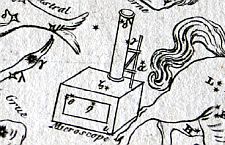 Microscopium
Microscopium |

 Norma
Norma |
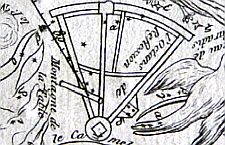 Octans
Octans |
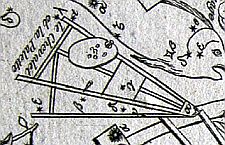 Pictor
Pictor |
 Pyxis
Pyxis |

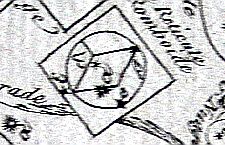 Reticulum
Reticulum |
 Sculptor
Sculptor |
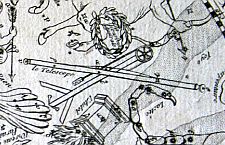 Telescopium
Telescopium |


|
Back to Star Lore |
Back to Art |
Back to Space Page |
Back to English |
 Back to Start Page |